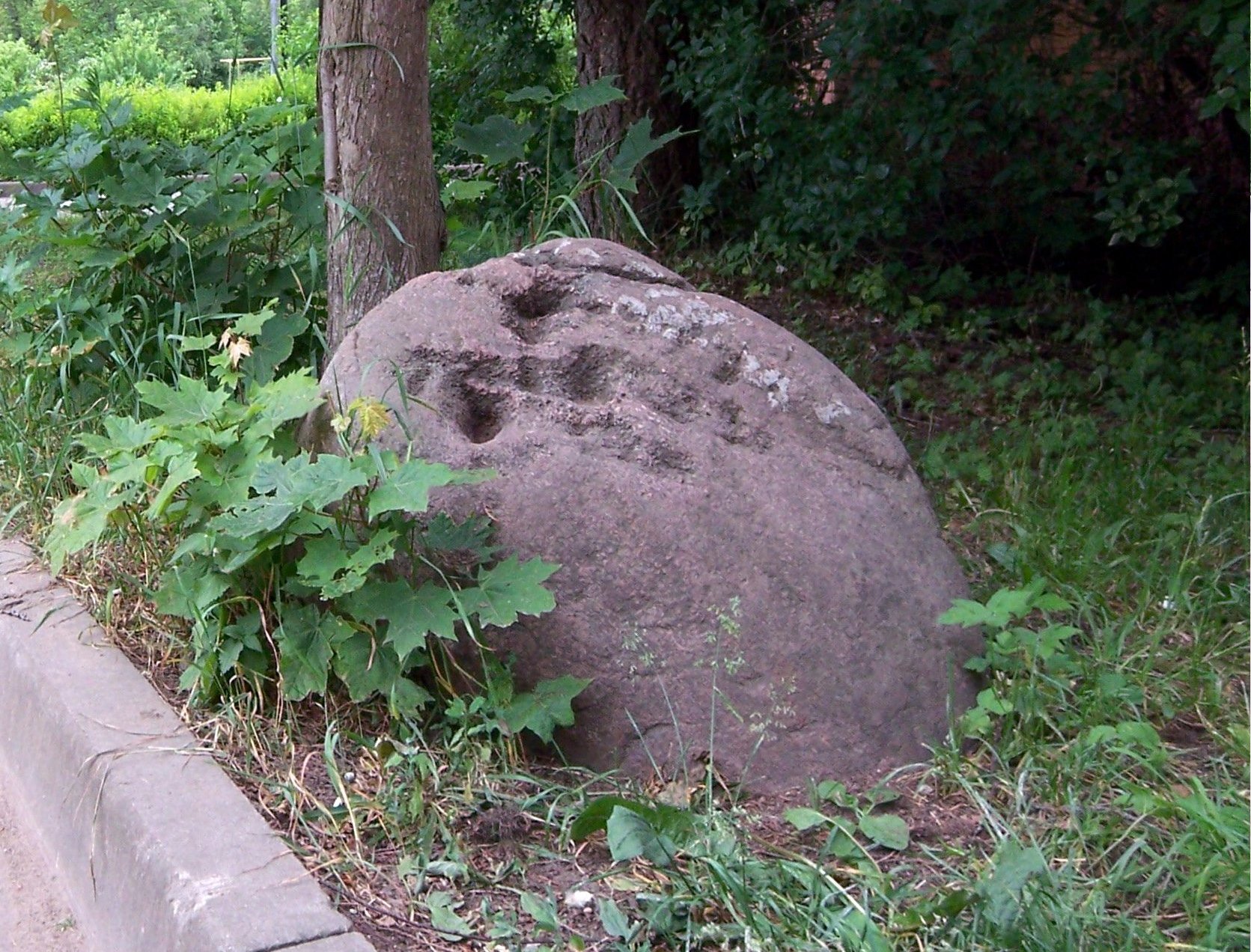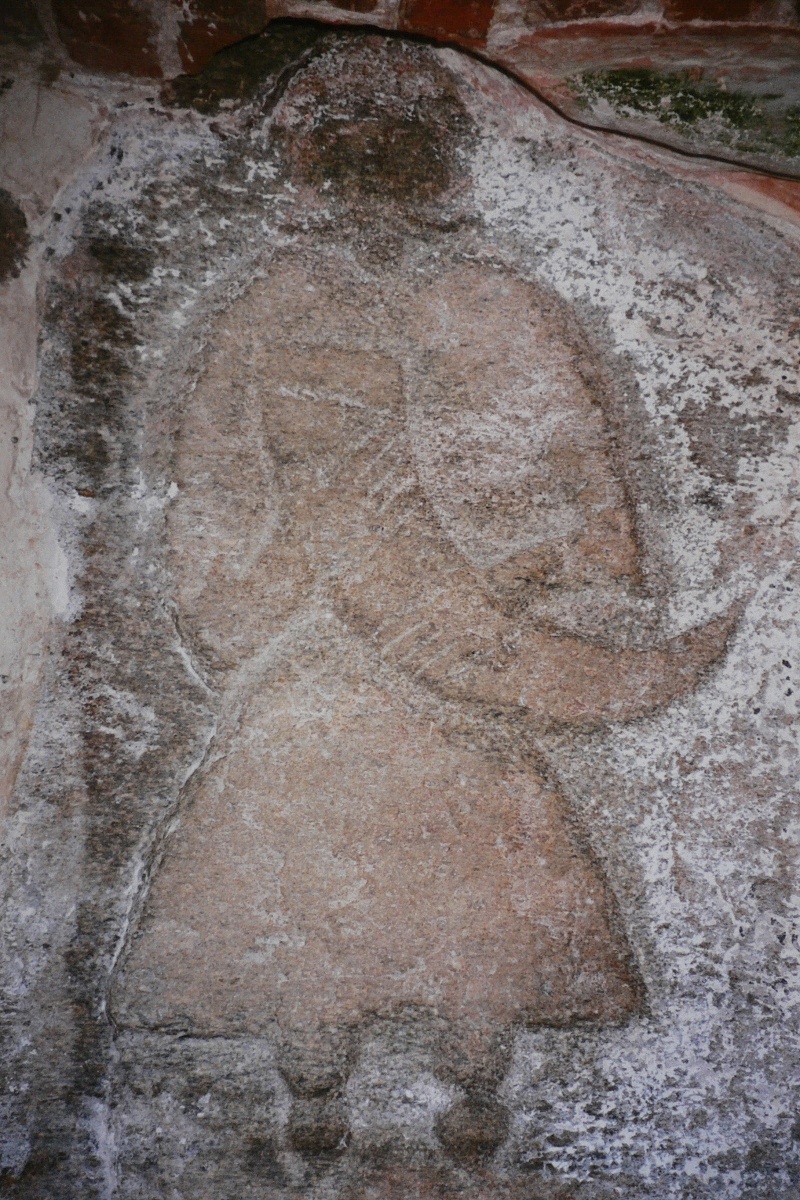|
Sin-Kamen
Blue Stone, or Blue Rock (Russian: Синь-камень) is a type of pagan sacred stones, widespread in Russia in areas historically inhabited by both East Slavic peoples, Eastern Slavic (Russians, Russian), and Volga Finns, Volga Finnic tribes (Merya people, Merya, Muromians, Muroma (Russian)). Unlike S ... [...More Info...] [...Related Items...] OR: [Wikipedia] [Google] [Baidu] |
Sledovik
Sledovik (Следовик, in Russian literally – a Footprint Stone) is a most widespread type of sacred stones, venerated in Slavic (Russian, Belarusian, Ukrainian) and Finnic (Karelia, Merya people, Merya) paganism, pagan practices. These are big stones, usually granite boulders of glacier origin, with hollows in them, that frequently bear traces of processing (seem to be artificially deepened and/or widened), and in some cases resemble foot traces, similar to those that might be left by a bare foot on a soft clay-like surface (hence the name). It is not completely clear if the stones were selected for veneration because the hollows resembled foot traces, or whether the hollows were processed to resemble footprints; most probably both interpretations are at least partly applicable. Sometimes it is hard to draw a line between the Sledovik stone and the so-called Chashechnik stone (Чашечник, literally – a cup-stone), as the only difference between these two is that ... [...More Info...] [...Related Items...] OR: [Wikipedia] [Google] [Baidu] |
Lake Pleshcheyevo
Lake Pleshcheyevo ( rus, Плеще́ево о́зеро, p=plʲɪˈɕːejɪvə ˈozʲɪrə) is a glacial lake in Yaroslavl Oblast, Russia. The historic town of Pereslavl-Zalessky is on the southeastern side of the lake. The lake, which is part of Pleshcheyevo Ozero National Park, covers an area of over 51 km2, its length being and its shoreline . Although it is deep in the middle, the waters near the shore are quite shallow. The lake is well known for camping, swimming, fishing, and hot air ballooning. History The Primary Chronicle refers to the Lake of Kleshchin, which was a Meryan town on its shore. The major relic of Kleshchin is a legendary twelve-ton boulder, the " Blue stone", which was worshipped by pagans in centuries past, and is still a venue for celebrating Russian Orthodox holidays. In 1688–1693, Peter the Great built his famous "funny flotilla" (i. e. training flotilla) on Lake Pleshcheyevo for his own amusement, including the so-called Peter's little bo ... [...More Info...] [...Related Items...] OR: [Wikipedia] [Google] [Baidu] |
Pagan
Paganism (, later 'civilian') is a term first used in the fourth century by early Christians for people in the Roman Empire who practiced polytheism, or ethnic religions other than Christianity, Judaism, and Samaritanism. In the time of the Roman Empire, individuals fell into the pagan class either because they were increasingly rural and provincial relative to the Christian population, or because they were not '' milites Christi'' (soldiers of Christ).J. J. O'Donnell (1977)''Paganus'': Evolution and Use, ''Classical Folia'', 31: 163–69. Alternative terms used in Christian texts were '' hellene'', '' gentile'', and '' heathen''. Ritual sacrifice was an integral part of ancient Greco-Roman religion and was regarded as an indication of whether a person was pagan or Christian. Paganism has broadly connoted the "religion of the peasantry". During and after the Middle Ages, the term ''paganism'' was applied to any non-Christian religion, and the term presumed a belief in f ... [...More Info...] [...Related Items...] OR: [Wikipedia] [Google] [Baidu] |
Biotite
Biotite is a common group of phyllosilicate minerals within the mica group, with the approximate chemical formula . It is primarily a solid-solution series between the iron- endmember annite, and the magnesium-endmember phlogopite; more aluminous end-members include siderophyllite and eastonite. Biotite was regarded as a mineral ''species'' by the International Mineralogical Association until 1998, when its status was changed to a mineral ''group''. The term ''biotite'' is still used to describe unanalysed dark micas in the field. Biotite was named by J.F.L. Hausmann in 1847 in honor of the French physicist Jean-Baptiste Biot, who performed early research into the many optical properties of mica. Members of the biotite group are sheet silicates. Iron, magnesium, aluminium, silicon, oxygen, and hydrogen form sheets that are weakly bound together by potassium ions. The term "iron mica" is sometimes used for iron-rich biotite, but the term also refers to a flaky micace ... [...More Info...] [...Related Items...] OR: [Wikipedia] [Google] [Baidu] |
Geography Of Yaroslavl Oblast
Yaroslavl Oblast is a federal subject of Russia (an oblast), which is located in the Central Federal District, surrounded by the Tver, Moscow, Ivanovo, Vladimir, Kostroma, and Vologda oblasts. This geographic location gives the oblast the advantages of proximity to Moscow and Saint Petersburg. Additionally, the city of Yaroslavl, the administrative center of the oblast, is served by major highways, railroads, and waterways. The population of the oblast was 1,272,468 as of the 2010 Census. Geography The climate of Yaroslavl Oblast is temperate continental; there are four clearly established seasons and most of the precipitation falls as showers during the warm half of the year. Winters are cold and snowy winters, and summers are quite warm. The coldest month is January, when the average temperature is about , while the warmest is July when the average temperature is . Formerly almost all territory was covered with thick conifer forest (fir, pine). After much of this was harve ... [...More Info...] [...Related Items...] OR: [Wikipedia] [Google] [Baidu] |
Slavic Mythology
Slavic paganism, Slavic mythology, or Slavic religion refer to the Religion, religious beliefs, myths, and ritual practices of the Slavs before Christianisation of the Slavs, Christianisation, which occurred at various stages between the 8th and the 13th century. The South Slavs, who likely settled in the Balkans during the 6th–7th centuries AD, bordering with the Byzantine Empire to the south, came under the sphere of influence of Eastern Christianity relatively early, beginning with the creation of writing systems for Slavic languages (first Glagolitic, and then Cyrillic script) in 855 by the brothers Saints Cyril and Methodius and the adoption of Christianity in First Bulgarian Empire, Bulgaria in 864 and 863 in Great Moravia. The East Slavs followed with the official adoption in 988 by Vladimir the Great of Kievan Rus'. The process of Christianising the West Slavs was more gradual and complicated compared to their eastern counterparts. The Moravians accepted Christianity a ... [...More Info...] [...Related Items...] OR: [Wikipedia] [Google] [Baidu] |
Sacred Rocks
Sacred describes something that is dedicated or set apart for the service or worship of a deity; is considered worthy of spiritual respect or devotion; or inspires awe or reverence among believers. The property is often ascribed to objects (a " sacred artifact" that is venerated and blessed), or places (" sacred ground"). French sociologist Émile Durkheim considered the dichotomy between the sacred and the profane to be the central characteristic of religion: "religion is a unified system of beliefs and practices relative to ''sacred things'', that is to say, things set apart and forbidden." Durkheim, Émile. 1915. '' The Elementary Forms of the Religious Life''. London: George Allen & Unwin. . In Durkheim's theory, the sacred represents the interests of the group, especially unity, which are embodied in sacred group symbols, or using team work to help get out of trouble. The profane, on the other hand, involve mundane individual concerns. Etymology The word ''sacred'' ... [...More Info...] [...Related Items...] OR: [Wikipedia] [Google] [Baidu] |
Sami People
Acronyms * SAMI, ''Synchronized Accessible Media Interchange'', a closed-captioning format developed by Microsoft * Saudi Arabian Military Industries, a government-owned defence company * South African Malaria Initiative, a virtual expertise network of malaria researchers People * Sami (name), including lists of people with the given name or surname * Sámi people, the indigenous people of Norway, Sweden, the Kola Peninsula and Finland * Samantha Shapiro (born 1993), American gymnast nicknamed "Sami" Places * Sami (ancient city), an ancient Greek city in the Peloponnese * Sami, Burkina Faso, a district * Sämi, a village in Lääne-Viru County in northeastern Estonia * Sami District, Gambia * Sami, Cephalonia, Greece, a municipality ** Sami Bay, east of Sami, Cephalonia * Sami, Gujarat, India, a town * Sami, Paletwa, Myanmar, a town Other uses * Sámi languages, languages spoken by the Sámi * Sami (chimpanzee), kept at the Belgrade Zoo * Sami, a common name fo ... [...More Info...] [...Related Items...] OR: [Wikipedia] [Google] [Baidu] |
Sieidi
Sieidis (, , , ) are Sami cultural items, usually a rock with unusual shape. Sieidis are found in nature in certain sacred places, for example at the sea or river beaches or on the mountain. The word sieidi has also been used for holy rocks or wooden figures that have undergone some processing. The victory was a symbol of the divine power ruling over the natural resources that humans needed for their survival. Samis sacrificed parts of their catch at sea to get a successful hunting or fishing in the future. In southern Sami Southern may refer to: Businesses * China Southern Airlines, airline based in Guangzhou, China * Southern Airways, defunct US airline * Southern Air, air cargo transportation company based in Norwalk, Connecticut, US * Southern Airways Express ..., the name varies between viero-gierkie (sacrifice stone), viero-moere (sacrificial wood), soul-gierkie (goose-goat) and soul-nut (goose-tree). Physical characteristics Each stone is different from the others, an ... [...More Info...] [...Related Items...] OR: [Wikipedia] [Google] [Baidu] |
Belarus
Belarus, officially the Republic of Belarus, is a landlocked country in Eastern Europe. It is bordered by Russia to the east and northeast, Ukraine to the south, Poland to the west, and Lithuania and Latvia to the northwest. Belarus spans an area of with a population of . The country has a hemiboreal climate and is administratively divided into Regions of Belarus, six regions. Minsk is the capital and List of cities and largest towns in Belarus, largest city; it is administered separately as a city with special status. For most of the medieval period, the lands of modern-day Belarus was ruled by independent city-states such as the Principality of Polotsk. Around 1300 these lands came fully under the Grand Duchy of Lithuania and subsequently by the Polish–Lithuanian Commonwealth; this period lasted for 500 years until the Partitions of Poland, 1792-1795 partitions of Poland-Lithuania placed Belarus within the Belarusian history in the Russian Empire, Russian Empire for the fi ... [...More Info...] [...Related Items...] OR: [Wikipedia] [Google] [Baidu] |
Boris Stones
Boris Stones (, ; ), also called Dvina Stones (), are seven medieval Artifact (archaeology), artifacts erected along the bank of the Western Dvina between Polotsk and Drissa, Belarus. They probably predate Christianity in the area, but were inscribed in the 12th century with text and an image of Christ. The largest of the stones is 17 metres in circumference. History Although these landmarks were described in the 16th century by Maciej Stryjkowski, it was Georg von Cancrin in 1818 who first brought them to scholarly attention. Cancrin discovered that a boulder near Orsha had the following inscription: "In the year 1171, on the 7th day of March, was completed this cross. Lord, please help your servant Basil, whose other name is Rogvolod, Boris' son". Subsequently, several other boulders with Boris's name were discovered. In the 1930s, two of these were blown up by Communist authorities as religious objects and their remains used to pave the road between Minsk and Moscow. Another ... [...More Info...] [...Related Items...] OR: [Wikipedia] [Google] [Baidu] |




